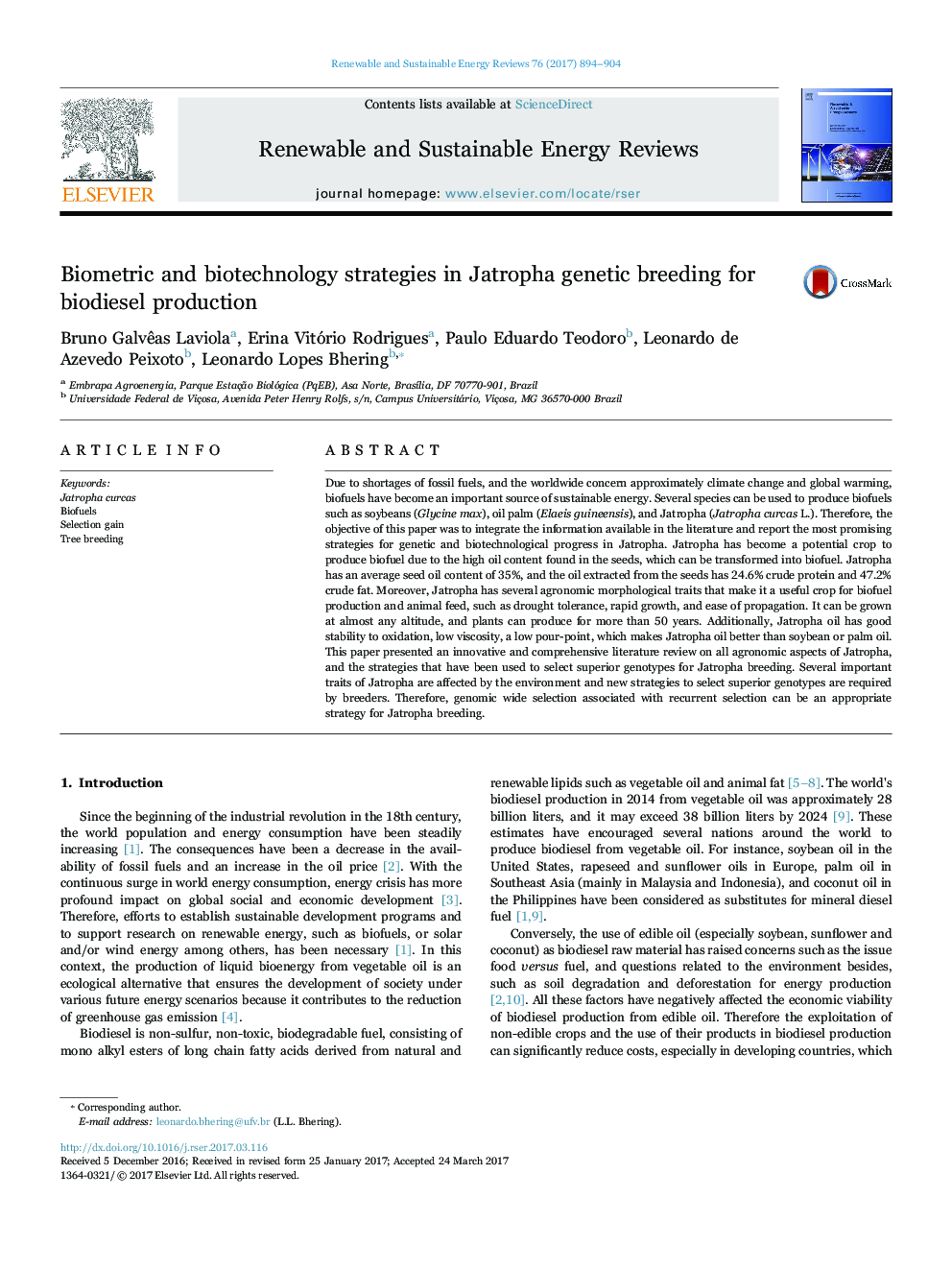| Article ID | Journal | Published Year | Pages | File Type |
|---|---|---|---|---|
| 5482200 | Renewable and Sustainable Energy Reviews | 2017 | 11 Pages |
Abstract
Due to shortages of fossil fuels, and the worldwide concern approximately climate change and global warming, biofuels have become an important source of sustainable energy. Several species can be used to produce biofuels such as soybeans (Glycine max), oil palm (Elaeis guineensis), and Jatropha (Jatropha curcas L.). Therefore, the objective of this paper was to integrate the information available in the literature and report the most promising strategies for genetic and biotechnological progress in Jatropha. Jatropha has become a potential crop to produce biofuel due to the high oil content found in the seeds, which can be transformed into biofuel. Jatropha has an average seed oil content of 35%, and the oil extracted from the seeds has 24.6% crude protein and 47.2% crude fat. Moreover, Jatropha has several agronomic morphological traits that make it a useful crop for biofuel production and animal feed, such as drought tolerance, rapid growth, and ease of propagation. It can be grown at almost any altitude, and plants can produce for more than 50 years. Additionally, Jatropha oil has good stability to oxidation, low viscosity, a low pour-point, which makes Jatropha oil better than soybean or palm oil. This paper presented an innovative and comprehensive literature review on all agronomic aspects of Jatropha, and the strategies that have been used to select superior genotypes for Jatropha breeding. Several important traits of Jatropha are affected by the environment and new strategies to select superior genotypes are required by breeders. Therefore, genomic wide selection associated with recurrent selection can be an appropriate strategy for Jatropha breeding.
Keywords
Related Topics
Physical Sciences and Engineering
Energy
Renewable Energy, Sustainability and the Environment
Authors
Bruno Galvêas Laviola, Erina Vitório Rodrigues, Paulo Eduardo Teodoro, Leonardo de Azevedo Peixoto, Leonardo Lopes Bhering,
